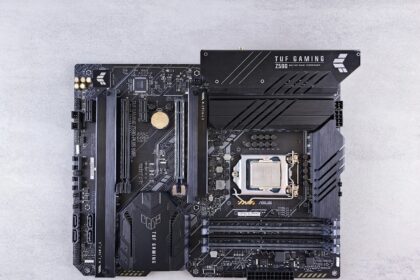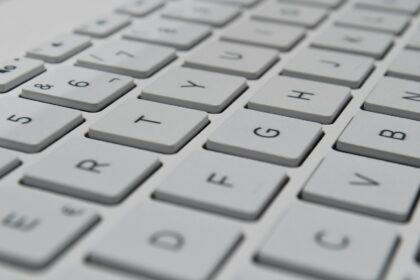This introduction explains what causes a sudden blue screen and how a clear plan can protect your data.
The WHEA_UNCORRECTABLE_ERROR is a Blue Screen triggered when Windows’ hardware error architecture finds a critical fault. Common components at fault include CPU, GPU, RAM, motherboard, power supply, and storage.
Drivers, firmware, and BIOS/UEFI settings can also create a similar fault signal. The stop code often appears as 0x0000124, and minidumps land in C:WindowsMinidump for analysis.
This guide offers a safe, step-by-step path to diagnose and fix the problem without risking your files. You’ll start with quick checks and move to deeper scans only after you secure important data.
Expect practical tips for both Windows versions, clear signs that point to failing components, and moments when it’s wise to pause and seek professional help.
Understand the WHEA_UNCORRECTABLE_ERROR: What it is and why it happens
A sudden blue stop screen usually signals a low-level system fault that Windows cannot safely ignore. When a non-recoverable hardware condition appears, the operating system halts to protect data and components and writes logs and minidumps for diagnosis.
Common hardware-related causes
Instability often comes from overheating or voltage issues in the CPU or GPU, failing RAM, an aging motherboard, an unstable power supply, or degrading storage devices. Each component can produce similar symptoms: random restarts under load (power supply), crashes during heavy graphics (GPU heat or drivers), or freezes during multitasking (memory faults).
Software and firmware factors
Drivers act as the bridge between the operating system and device hardware. Corrupted or outdated drivers, conflicting system updates, and misconfigured or old Bios/UEFI settings—including aggressive memory profiles—can trigger the same stop code. The common code is 0x0000124, and Windows logs focus troubleshooting on the implicated device.
- Why the system halts: to prevent further component damage and data loss.
- Quick clues: check minidumps and system logs for which device reported the fault.
- Next steps: treat transient issues differently than recurrent failures; guide will show safe isolation and targeted tests.
Before you begin: Safety, data protection, and BSOD basics
Start by backing up essential files. If the computer still boots, copy important documents, photos, and config files to an external drive or cloud. Save time and stress later by securing irreplaceable data first.
Avoid heavy disk scans when storage clicks or behaves oddly. CHKDSK and similar tools can stress a failing drive and raise the chance of data loss. Pause and consider recovery methods if the drive shows symptoms.
- Understand the blue screen: Windows halts the system to protect data and hardware when it detects a critical fault.
- Know where evidence lives: crash dumps sit at C:WindowsMinidump and help correlate issues with drivers or hardware.
- Prepare basic tools: have a bootable USB installer, access to Recovery Environment, and your motherboard support pages for firmware or driver steps.
- Stabilize power: use a reliable outlet or UPS to prevent mid-process shutdowns that can corrupt files or BIOS updates.
Document recent changes—new drivers, updates, or hardware swaps—so you save time when narrowing down causes. Take brief notes after each attempt; that history helps if professional recovery becomes necessary.
How to Fix the WHEA Uncorrectable Error on Windows 10/11
Start by isolating software factors. Interrupt boot three times to open the Recovery Environment, go to Advanced Options > Startup Settings > Restart, then press F4 or F5 to enter Safe Mode. This step loads minimal drivers and helps reveal if a third-party driver or service causes the crash.
Remove recent updates
If crashes began after a monthly update, use Troubleshoot > Advanced Options > Uninstall Updates and remove the latest quality or feature update. This often stops repeating blue screens without touching personal data.
Check logs and manage drivers
Open Event Viewer (eventvwr.msc) and review Windows Logs > System near the crash time. Note any referenced driver or device name, then open Device Manager (Win+X > Device Manager) and update, roll back, or disable that driver. Focus on display adapters, storage controllers, and chipset entries.
Restore system state and repair files
Use System Restore from Advanced Options if a restore point exists before the issue. Then run built-in repair tools from Command Prompt: sfc /scannow, DISM /Online /Cleanup-Image /RestoreHealth. Schedule chkdsk C: /f /r only after confirming the drive is healthy.
- Tip: Keep the computer on stable power while running restores and scans.
- Test: After each change, reproduce the workload that caused the failure to confirm progress.
Tame the firmware: BIOS/UEFI resets, overclocking, and stability
A misset BIOS or an aggressive memory profile often turns a stable machine into a crash-prone device. Start by restoring firmware settings to a known-good baseline before chasing hardware faults.
Enter the firmware menu and choose “Load Defaults” or “Optimized Defaults.” Set the CPU ratio/multiplier to Auto, disable memory profiles (XMP, DOCP, EXPO), and return CPU and DRAM voltages plus BCLK to Auto. Save and exit, then test the system under the same workload that caused the error.
Update BIOS/UEFI for compatibility and stability
If problems persist, visit your motherboard manufacturer’s support page and download the correct BIOS file for your model and revision. Use a USB drive and the built-in flash utility in the firmware menu (EZ Flash, M-Flash, Q-Flash or similar).
- Confirm the board model with tools like CPU-Z and note the current firmware version.
- Ensure steady power during flashing; a mid-update shutdown can brick the device.
- After a successful update, retest and reintroduce performance tweaks slowly—one change at a time—to spot which setting brings back problems.
Keep a short log of firmware versions and the timing of any updates or changes. This record helps link improvements or regressions to specific updates, drivers, or hardware components.
Check your hardware health: Heat, power, memory, and storage
Begin by checking core hardware vitals—heat levels, power delivery, and memory health—before chasing software leads.
Rule out overheating: airflow, dust, temperatures in BIOS/UEFI
Open the case and confirm fans spin and vents are clear. Clean dust with compressed air and improve case airflow if needed.
Use the firmware Hardware Monitor to view CPU and GPU temps. Consistent readings above ~85°C can cause instability. Reseat coolers or refresh thermal paste if temps stay high.
Verify PSU stability and power delivery
Check that power cables are snug and try a different outlet or surge protector. If the system reboots under load, consider testing with a known-good power supply or having a technician use proper tools.
Signs like intermittent restarts or coil whine often point at poor power delivery rather than other components.
Test RAM with Windows Memory Diagnostic and MemTest86
Run Windows Memory Diagnostic for a quick scan, then boot MemTest86 from USB for two to four passes. These tests catch intermittent memory faults that cause random crashes.
If errors appear, test each stick alone and swap slots to isolate a bad module or board slot.
Assess storage health and signs of drive failure before running scans
Listen for clicking drives, watch for devices missing in BIOS, and note recurring file corruption. Those are red flags of imminent failure.
Avoid running CHKDSK or full resets if you suspect a failing drive; instead back up data and consider professional recovery.
- Start with heat and power—fixing those basics often clears related errors.
- Use targeted tools like MemTest86 and the firmware monitor before swapping parts.
Read the clues: Use logs and reports to pinpoint the failing component
Inspect crash records first. A careful read of system logs often separates intermittent glitches from repeatable hardware faults.
Event Viewer WHEA entries and System logs
Open Event Viewer (eventvwr.msc) and navigate to Windows Logs > System. Look for WHEA entries near the crash time and note any driver or device names listed.
Pay attention to repeated patterns. Recurring warnings tied to one device often point toward a bad driver, storage controller, or a failing PCIe card.
Minidumps and stop code 0x0000124 for deeper diagnosis
Collect minidump files from C:WindowsMinidump. These files often match stop code 0x0000124 and can show whether the fault came from CPU cache, PCIe paths, or another subsystem.
Cross-reference dump timestamps with what you were doing—gaming, rendering, or copying files—to spot load-related triggers that reveal the likely failing component.
- Head to Event Viewer and focus on the System log around the crash time for clear reports of the implicated component.
- Look for repeat patterns that tie errors to one device or driver; those patterns guide targeted action.
- Collect minidumps and use analysis tools to check for consistent modules involved at crash time.
- Use reports as direction, then validate with tests like MemTest86 or controlled workload runs before swapping parts or updating firmware.
- Keep a short log of findings and actions—your running report speeds diagnosis and helps any later professional review.
When to pause DIY and seek professional recovery or repair
Loud clicking from a drive or storage that vanishes in firmware are urgent signs — stop and protect your files. These symptoms suggest imminent hardware failure and a rising risk to your data. Avoid actions that write to the disk or stress components further.
If crashes continue in Safe Mode, or the system powers on with no display, pause your attempts. Repeated faults under minimal load usually mean a failing module, bad board slot, or supply problem that needs proper tools.
- Red flags: persistent crashes in Safe Mode, drives not seen in BIOS, grinding sounds from storage, or random resets under light use.
- Don’t run intensive write operations like full CHKDSK with repair flags, factory resets, or long stress tests when storage is suspect.
- Prioritize data: secure your most important files first. If you lack recent backups and see these signs, consider professional recovery.
- Document everything you tried and how the system behaved; a clear timeline speeds technician diagnosis and recovery.
If you don’t have a known-good power supply or diagnostic kit, a repair shop can test PSU, RAM, and board-level faults faster and with less risk. The goal is simple: protect data and restore a stable system with the least possible time and loss.
Conclusion
, Follow a measured checklist that moves from Safe Mode isolation through driver checks and measured hardware tests.
Start with isolation and remove recent updates if crashes began after a patch. Use Event Viewer and Device Manager to track suspicious drivers and update or roll back as needed. Keep BIOS conservative: disable XMP/DOCP/EXPO and use your motherboard menu or manufacturer tools for safe firmware updates.
Run SFC and DISM early, then reserve CHKDSK repairs for storage that looks healthy. Use MemTest86 and quick memory tests to validate RAM and use short CPU or GPU stress tests for repeatable issues.
Protect your most important data. If drives click, disappear in firmware, or crashes persist under minimal load, pause DIY and focus on recovery steps or professional help. With notes, logs, and a steady process, most systems recover without needless parts swaps.
FAQ
What is the WHEA_UNCORRECTABLE_ERROR and what causes a blue screen?
This stop code signals a hardware error detected by Windows Hardware Error Architecture (WHEA). Common culprits include failing CPU, GPU, RAM, motherboard faults, unstable PSU, or dying storage. Software issues such as bad drivers, corrupted system files, or a misconfigured BIOS/UEFI can also trigger the crash.
Can a power supply problem produce that stop code?
Yes. Voltage drops, inconsistent rails, or an aging PSU can cause hardware to misbehave and generate WHEA reports. Verify PSU wattage and stability, test with a known-good unit, and check connections before assuming other components are at fault.
How do I isolate faulty drivers or recent updates?
Boot into Safe Mode to disable third-party drivers. Use Device Manager to roll back or update suspect drivers. If the issue began after a Windows update, uninstall recent updates or use System Restore to revert the system to a prior stable point.
Which built-in tools help repair system files and disks?
Run System File Checker (sfc /scannow) and DISM (DISM /Online /Cleanup-Image /RestoreHealth) to fix corrupted Windows files. Use CHKDSK to scan the drive for errors. These steps often resolve software-driven WHEA triggers.
Should I reset BIOS/UEFI or disable overclocking?
Yes. Resetting BIOS to defaults removes unstable settings. Disable XMP/DOCP/EXPO profiles and any manual overclocks or custom voltages. If stability improves, re-enable profiles one at a time and test to find a safe configuration.
When is it appropriate to update BIOS/UEFI?
Update firmware when release notes mention stability, CPU microcode fixes, or compatibility for your CPU/GPU. Follow the motherboard maker’s instructions precisely — a failed update can brick the board. Only update if you suspect firmware contributes to crashes.
How do I check for overheating or cooling issues?
Inspect airflow and remove dust from fans and heatsinks. Use BIOS/UEFI hardware monitors or tools like HWMonitor to check temperatures under load. Replace degraded thermal paste and ensure the case and CPU/GPU coolers are properly seated.
What’s the best way to test RAM for errors?
Run Windows Memory Diagnostic for a quick check, then use MemTest86 for a thorough multi-pass test from boot. Test each RAM stick individually and try different DIMM slots to spot a defective module or slot on the motherboard.
How can I diagnose storage devices before they fail catastrophically?
Check SMART data with CrystalDiskInfo or the drive maker’s tools. Run full surface scans and CHKDSK to find bad sectors. If SMART shows reallocated sectors or pending failures, back up immediately and replace the drive.
Where do I find WHEA logs and minidumps for deeper analysis?
Use Event Viewer (Windows Logs → System) and filter for WHEA-Logger entries. Collect minidump files from C:WindowsMinidump and analyze them with WinDbg or WhoCrashed to identify failing drivers or hardware addresses tied to stop code 0x00000124.
At what point should I stop DIY troubleshooting and seek professional repair?
If multiple components test fine but crashes persist, or if you see hardware-level errors and risk data loss, get professional diagnostics. Seek repair when the motherboard, CPU, or persistent PSU faults appear, or when firmware updates are risky for your system.
What precautions ensure data safety while troubleshooting?
Back up important files immediately to an external drive or cloud storage. Create a system image or recovery drive before BIOS updates, major driver changes, or disk repairs. That protects data if a failing component causes complete system loss.
Can GPU faults produce these errors, and how do I test the card?
Yes. GPU instability or VRAM faults can trigger WHEA events. Use FurMark or Unigine benchmarks to stress-test the GPU, monitor temps and artifacts, and try a different card or onboard graphics to isolate the problem.
Are there manufacturer tools that help diagnose components?
Yes. Intel, AMD, NVIDIA, Western Digital, Seagate, Samsung, and others offer diagnostics for CPUs, GPUs, and drives. Motherboard vendors like ASUS, MSI, Gigabyte, and ASRock provide BIOS logs and utilities to check voltages and firmware health.























